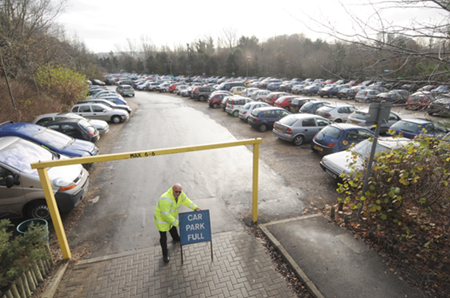- Decarbonising Transport, Department for Transport (DfT)
The number of people living in the West of England is forecast to grow significantly by 2036. Currently, transport accounts for 29% of carbon emissions in Bath and North East Somerset. Without changes in the way we travel, emissions are predicted to increase by almost a quarter by 2036, across the West of England.
With over half of journeys to work in Bath currently made by car, there is a need to increase travel by less polluting, more sustainable modes of transport, and also to reduce the number of overall trips we make. 1 in 3 car journeys in Bath start and end within the city, equating to 50,000 car movements a day. These are trips that for many could be undertaken by bus, bike, walking or scooting. In addition, 75% of people driving to work in Bath are doing so from outside the city. This demonstrates a need for more sustainable modes of travel for trips to, from, and within Bath.
Over-reliance on cars is not only impacting climate change, but also our health and wellbeing, through poor air quality and inactivity. It is also affecting our businesses, through congestion and time spent queuing in traffic, which reduces productivity. Congestion leads to longer, unreliable journey times for everyone, while low speeds and time stuck in traffic queues increase emissions further.
Without changes in the way we travel, by 2036 we could see the following travel issues across the West of England:
- A 40% increase in delays
- A 74% increase in time spent queuing in traffic
- A 9% increase in journey times
- There is anticipated to be a 13% increase in the number of people living in the B&NES area by 2036, compared with 2018 figures (ONS Population Projections for Local Authorities, ONS)
- There is anticipated to be a 25% increase in the number of trips across the West of England by 2036 (Joint Local Transport Plan 4, West of England Combined Authority, 2020)
- There are over 300 premature deaths a year in the West of England, due to nitrogen dioxide emissions (Joint Local Transport Plan 4, West of England Combined Authority, 2020)
- In B&NES 92% of nitrous dioxide emissions are from road traffic (Transport Delivery Action Plan for Bath Phase 1: Current and Future Report, Bath and North East Somerset Council, 2020)
- The annual cost of road congestion in the West of England is £300m. (Joint Local Transport Plan 4, West of England Combined Authority, 2020)
Odd Down Park & Ride Car Park
Key considerations
To successfully deliver the required changes, we must consider several B&NES-specific factors:
- Protecting Bath’s status as a World Heritage Site
- The significant number of listed buildings
- The presence of a network of historic vaults beneath the city centre, and the impact of this on delivering infrastructure at street level
- The landscape and townscape, including hilly terrain and narrow streets
- The River Avon, which bisects the city, with relatively few crossings
- The reliance of the local economy on tourism
- Higher levels of car ownership in B&NES than the national average

